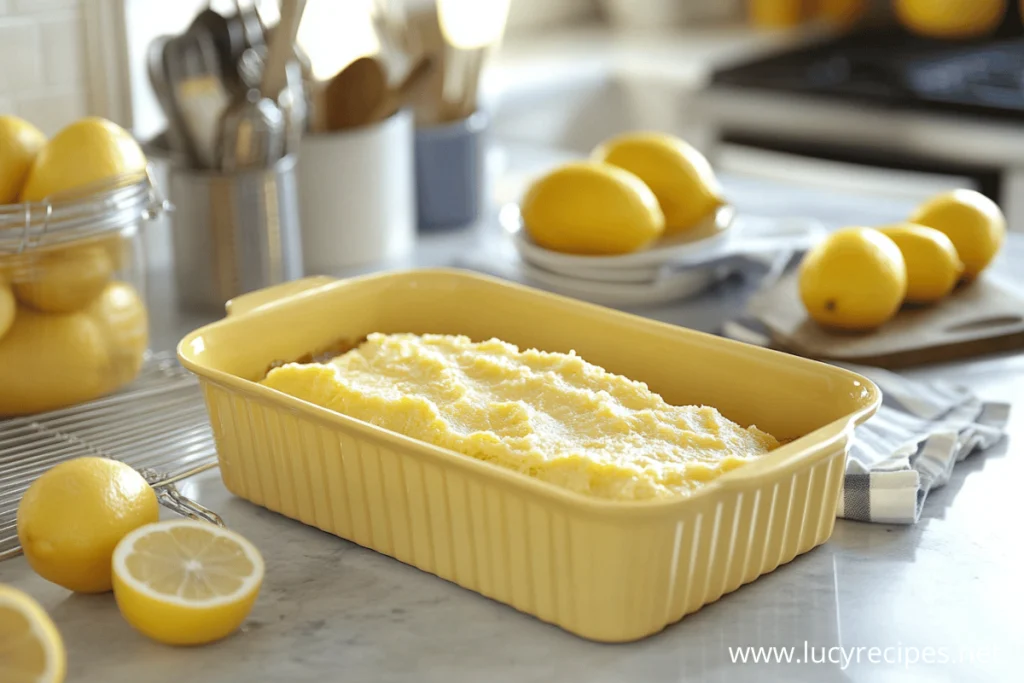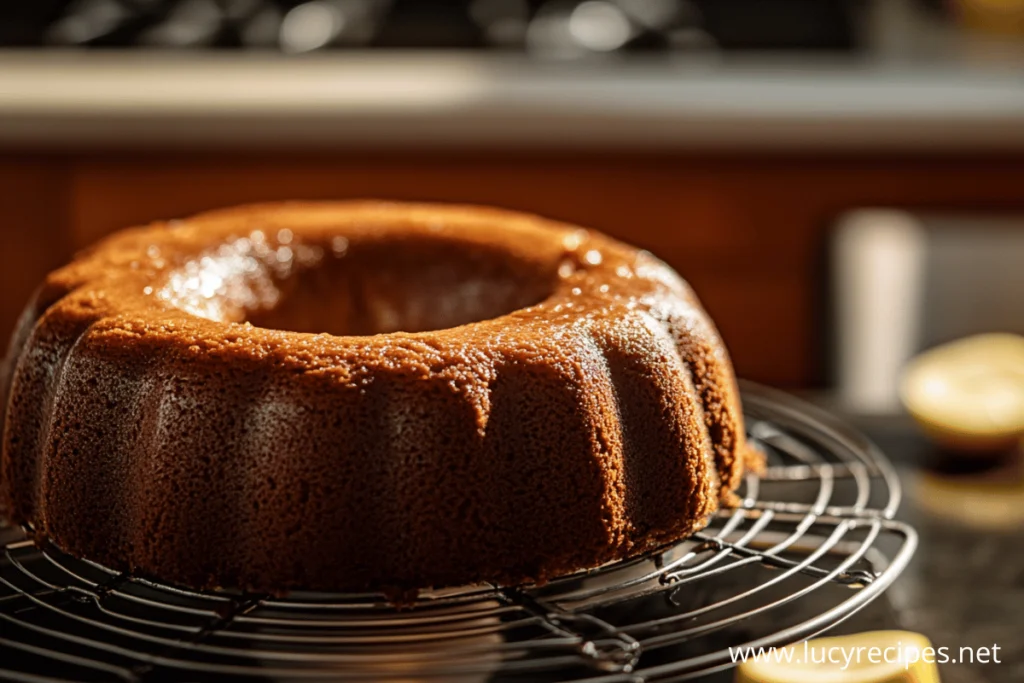Introduction
When it comes to timeless desserts, few can rival the classic appeal of a Lemon Pound Cake. Loved for its rich texture and bright, citrusy flavor, this treat has become a staple in homes and bakeries around the world. Whether you’re a seasoned baker or a beginner eager to experiment, Lemon Pound Cake offers a delightful balance of simplicity and sophistication. In this article, we’ll dive deep into what makes this dessert special, its history, and how you can make the perfect version at home.
Table of Contents
What is Lemon Pound Cake?
Lemon Pound Cake is a timeless dessert known for its rich, buttery texture and vibrant citrus flavor. This classic cake combines the simplicity of a traditional pound cake with the refreshing zest and tang of fresh lemons, creating a perfect balance of sweet and tangy. The hallmark of a great Lemon Pound Cake lies in its dense yet moist crumb, making it an ideal treat for any occasion. Whether served plain, topped with a sweet lemon glaze, or accompanied by fresh berries, this versatile cake is beloved for its ability to satisfy both casual cravings and special celebrations. Its straightforward ingredients and delightful flavor profile make it a staple in bakeries and home kitchens alike.
For a complementary dessert, explore how Mini Pecan Tarts can add variety to your dessert table.
The History of Lemon Pound Cake
Lemon Pound Cake holds a rich history that reflects its evolution from humble beginnings to a beloved dessert. Rooted in tradition, this cake has seamlessly merged classic techniques with the vibrant flavors of lemon, creating a treat that continues to stand the test of time.
The Origins of Pound Cake
The original pound cake dates back to the 18th century and earned its name from its straightforward recipe: a pound each of flour, butter, sugar, and eggs. This simple formula made it easy for bakers to remember and replicate, especially in a time when written recipes were rare. The resulting cake was dense and hearty, perfect for families and gatherings. Over the years, variations emerged, with bakers experimenting with additional ingredients to enhance flavor and texture.
How Lemon Became a Star Ingredient
Lemon was introduced to pound cake recipes in the 19th century, as global trade made citrus fruits more accessible. Its bright and tangy flavor perfectly complemented the rich, buttery base of the traditional pound cake, while the zest added an aromatic quality that elevated the dessert to new heights. Lemon not only enhanced the flavor but also added a touch of freshness, making the cake lighter and more versatile. Today, Lemon Pound Cake remains a favorite, celebrated for its harmonious blend of history and innovation.
Discover other nostalgic recipes like Old-Fashioned Sweet Potato Casserole for a taste of culinary tradition.
Key Ingredients for Lemon Pound Cake
The success of a delicious Lemon Pound Cake relies on carefully selected, high-quality ingredients. Each component plays a crucial role in achieving the signature dense yet moist texture and the bright, zesty flavor that makes this cake so irresistible. Here’s a closer look at the key ingredients that bring this classic dessert to life.
Selecting Fresh Lemons
Fresh lemons are the cornerstone of any Lemon Pound Cake. Their zest provides a concentrated citrus aroma, while the juice adds a tangy brightness to the batter. For the best results, choose firm, smooth lemons with vibrant yellow skin and a heavy feel, as these are typically juicier and more flavorful.
Butter, Sugar, and Flour: The Classic Trio
- Butter: Use unsalted butter for better control over the cake’s saltiness. Room-temperature butter ensures smooth mixing.
- Sugar: Granulated sugar is ideal for achieving a fine crumb.
- Flour: All-purpose flour provides the right structure. Sift it to avoid lumps.
For additional baking inspiration, learn how to Bake the Perfect Thanksgiving Dressing.
Eggs: The Binding Agent
Eggs are vital for binding the ingredients and contributing to the cake’s rich texture. Using room-temperature eggs helps them blend seamlessly into the batter, ensuring an even rise.
Optional Additions: Glazes, Zests, and Fillings
Enhance your Lemon Pound Cake with:
- A tangy lemon glaze made with powdered sugar and lemon juice.
- Additional flavor from lemon zest.
- Fillings like blueberries or poppy seeds for variety.
Tools You Need

Baking Essentials
- Mixing Bowls: Use multiple sizes for wet and dry ingredients.
- Electric Mixer: Ensures thorough mixing without overworking the batter.
- Measuring Cups and Spoons: Accurate measurements are key to success.
Specialty Tools for Perfect Results
- Zester or Microplane: For fine, aromatic lemon zest.
- Loaf Pan: A standard 9×5-inch loaf pan works best.
- Cooling Rack: Prevents soggy bottoms by allowing air circulation.
Step-by-Step Recipe for Lemon Pound Cake
Preparing the Ingredients
- Preheat your oven to 350°F (175°C).
- Grease and flour your loaf pan to prevent sticking.
- Measure out all ingredients, ensuring butter and eggs are at room temperature.
Mixing Techniques
- Cream the butter and sugar until light and fluffy.
- Add eggs one at a time, beating well after each addition.
- Gradually incorporate flour and lemon juice, alternating between wet and dry ingredients.
For more baking tips, check out the Ultimate Guide to Earl Grey Cookies.
Baking and Cooling Tips
- Bake for 50-60 minutes, or until a toothpick inserted in the center comes out clean.
- Let the cake cool in the pan for 10 minutes, then transfer it to a cooling rack.
Variations of Lemon Pound Cake
Lemon Pound Cake is a versatile dessert that lends itself to creative variations, allowing bakers to cater to dietary preferences or experiment with exciting flavors. Whether you’re avoiding gluten, following a vegan lifestyle, or looking for a twist on the classic, there’s a Lemon Pound Cake variation for everyone.
Gluten-Free Lemon Pound Cake
For those with gluten sensitivities, creating a gluten-free version of Lemon Pound Cake is simple and delicious. Substitute all-purpose flour with a high-quality gluten-free baking mix, ensuring it contains xanthan gum or guar gum for structure. Almond flour or a blend of rice and tapioca flours can also work well. Pair this base with fresh lemon zest and juice for a flavor-packed cake that maintains the classic dense yet moist texture. To prevent dryness, add a touch of yogurt or sour cream for extra moisture.
Vegan Lemon Pound Cake
Vegan Lemon Pound Cake eliminates animal products without compromising flavor or texture. Replace eggs with flaxseed meal mixed with water or unsweetened applesauce for binding. Use vegan butter or coconut oil in place of traditional butter, and opt for plant-based milk, such as almond or oat milk, for a tender crumb. Enhance the lemony flavor with generous amounts of fresh zest and juice. Finish with a vegan lemon glaze made from powdered sugar and plant-based milk for a sweet, citrusy topping.
For more ideas, explore Pumpkin Banana Loaf for a seasonal twist on classic baked goods.
Lemon Drizzle and Poppy Seed Options
For a classic variation, top your Lemon Pound Cake with a lemon drizzle. Combine powdered sugar with freshly squeezed lemon juice to create a glossy glaze that enhances both flavor and presentation. For a textural twist, fold poppy seeds into the batter. The nutty crunch of the seeds pairs beautifully with the tangy lemon flavor, adding an extra layer of interest to the cake. Alternatively, sprinkle poppy seeds on top of the glaze for a decorative finish.
These variations showcase the versatility of Lemon Pound Cake, ensuring that everyone, regardless of dietary needs or preferences, can enjoy this timeless dessert.
Troubleshooting Common Issues

Even with the best intentions, baking a Lemon Pound Cake can sometimes present challenges. Understanding how to address common problems can help ensure a flawless cake every time. Here are practical solutions for the most frequent issues.
Preventing a Dry Cake
An unevenly baked cake can result in parts of the cake being overdone while others remain undercooked. Here’s how to achieve a uniform bake:
- Accurate Measuring: Use precise measurements for dry ingredients, especially flour. Too much flour absorbs moisture, making the cake dry. Use a kitchen scale for best results or level off measuring cups with a knife.
- Don’t Overbake: Bake the cake at the specified temperature and start checking for doneness at the minimum baking time. Insert a toothpick into the center—if it comes out with a few crumbs but no wet batter, the cake is done.
- Incorporate Moisture-Enhancing Ingredients: Adding sour cream, yogurt, or buttermilk to the batter introduces extra moisture and enhances flavor.
- Use High-Quality Butter: Full-fat butter not only adds richness but also ensures the cake remains tender. Always use butter at room temperature for a smoother batter.
- Avoid Overmixing: Mix the batter just until combined. Overmixing can overwork the gluten in the flour, leading to a dense and dry texture.
Ensuring Even Baking
An unevenly baked cake can result in parts of the cake being overdone while others remain undercooked. Here’s how to achieve a uniform bake:
- Preheat the Oven Fully: Allow the oven to preheat for at least 10 minutes and use an oven thermometer to confirm the correct temperature.
- Place the Pan Properly: Position the pan in the center of the oven to ensure even heat distribution. Avoid placing it too close to the oven walls or on the bottom rack.
- Rotate the Pan Midway: About halfway through baking, carefully rotate the pan 180 degrees. This helps compensate for any hot spots in your oven.
- Use the Right Bakeware: Light-colored, metal pans are best for pound cakes as they conduct heat evenly. Avoid dark or glass pans, which can cause overbrowning or uneven baking.
- Room-Temperature Ingredients: Using butter, eggs, and milk at room temperature ensures a smooth batter that bakes evenly throughout.
Serving Suggestions
Pairing with Beverages
- Serve with a cup of hot tea, coffee, or a refreshing iced lemonade.
- For a luxurious twist, pair with champagne.
Garnishes and Presentation Ideas
- Dust the top with powdered sugar.
- Add fresh berries or whipped cream for a decorative touch.
Storing and Preserving Lemon Pound Cake
Short-Term Storage
Wrap the cake tightly in plastic wrap or store it in an airtight container. It will stay fresh for up to 3 days at room temperature.
Freezing Tips
- Slice the cake before freezing for convenience.
- Wrap each slice individually and store in a freezer-safe bag. Thaw at room temperature before serving.
Healthier Alternatives
Low-Sugar Options
Use a sugar substitute like Stevia or monk fruit sweetener. You can also reduce sugar by 25% without compromising texture.
Using Whole Grains
Substitute half the all-purpose flour with whole wheat flour for added fiber and nutrients.
Fun Facts About Lemon Pound Cake
Did You Know? Interesting Trivia
- The original pound cake recipe didn’t include leavening agents like baking powder or soda.
- Lemon Pound Cake became popular in the U.S. during the colonial era.
- It’s a favorite offering at many coffee shops worldwide.
FAQs
What is the secret to a moist cake?
How strong is lemon Cake?
Is Pound Cake a good strain?
Yes, Pound Cake is a popular Indica-dominant strain with sweet, dessert-like flavors and relaxing, euphoric effects.
Why is my pound cake gummy?
A gummy pound cake is usually caused by overmixing, incorrect ingredient ratios, or underbaking at a low temperature.
Popular Recipes and Variations
Classic Lemon Pound Cake Recipe
Follow the step-by-step recipe above for a traditional version.
Lemon Yogurt Pound Cake
Replace some of the butter with plain yogurt for a lighter texture and tangy flavor.
Cultural Significance of Lemon Pound Cake
A Dessert That Stands the Test of Time
Lemon Pound Cake is more than just a dessert; it’s a symbol of comfort and hospitality. It’s often served at family gatherings, weddings, and other celebrations, reflecting its universal appeal and timeless charm.
Conclusion and Final Thoughts
Lemon Pound Cake is a versatile, delightful dessert that combines rich tradition with a fresh, modern twist. Whether you’re savoring a classic recipe or exploring creative variations, this cake is sure to impress. So grab your lemons, preheat your oven, and enjoy the irresistible flavor of homemade Lemon Pound Cake.

